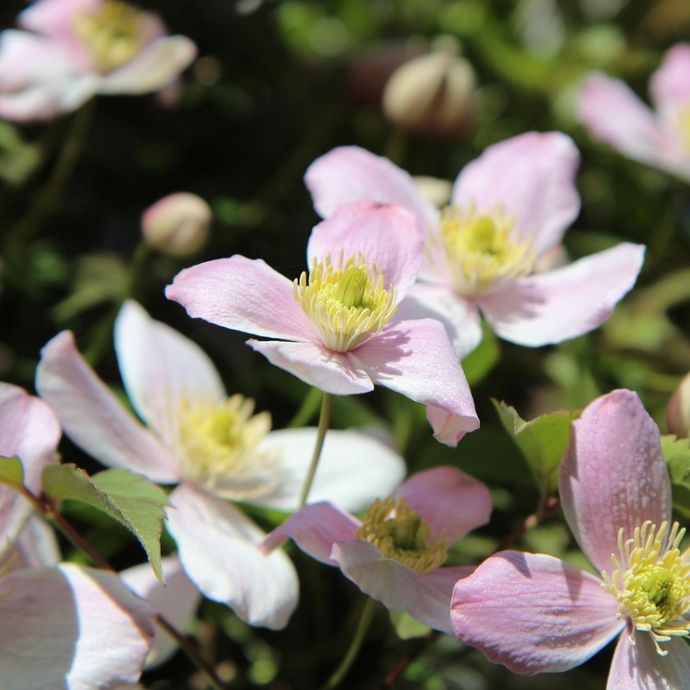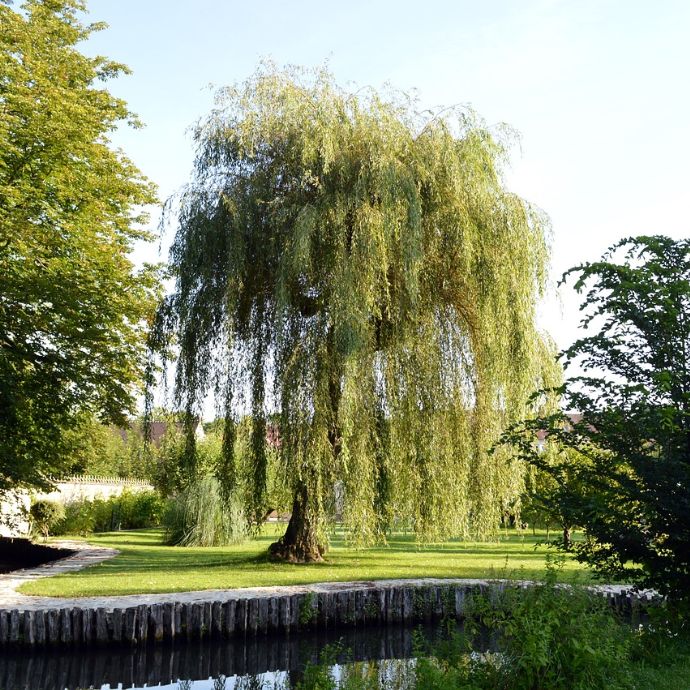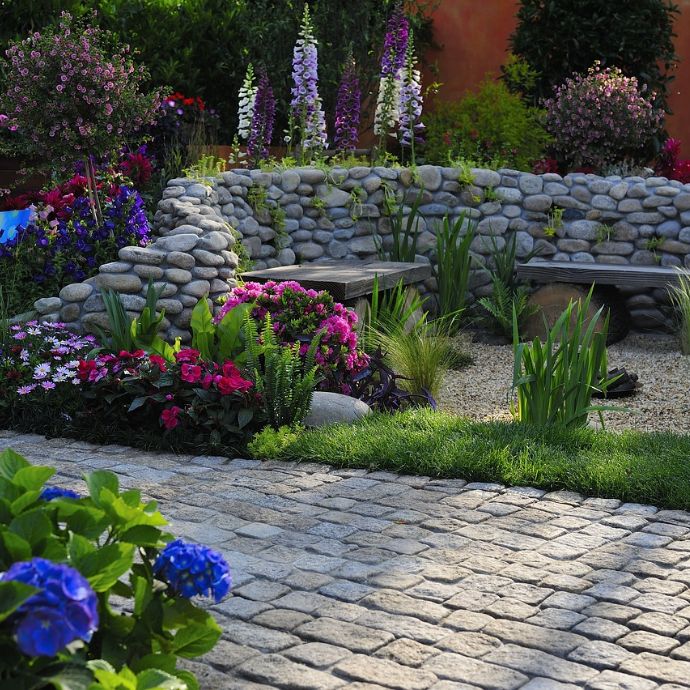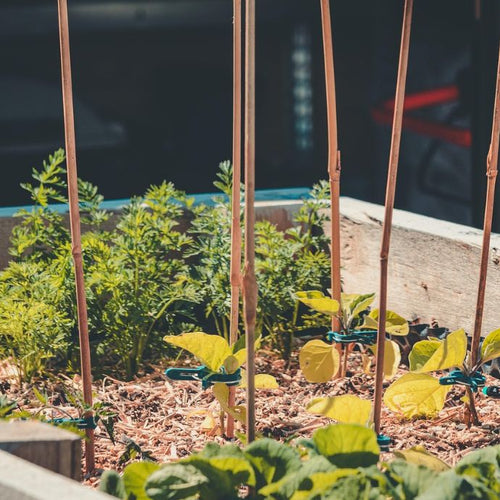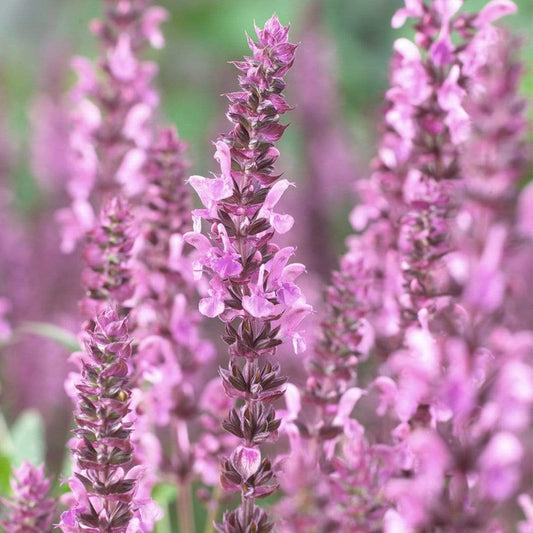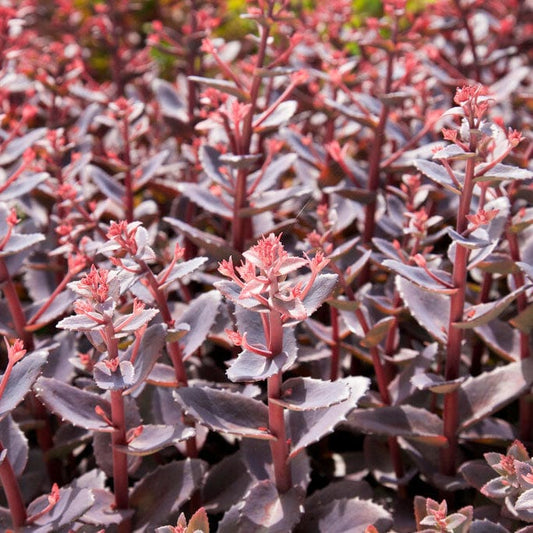Self Seeding Plants
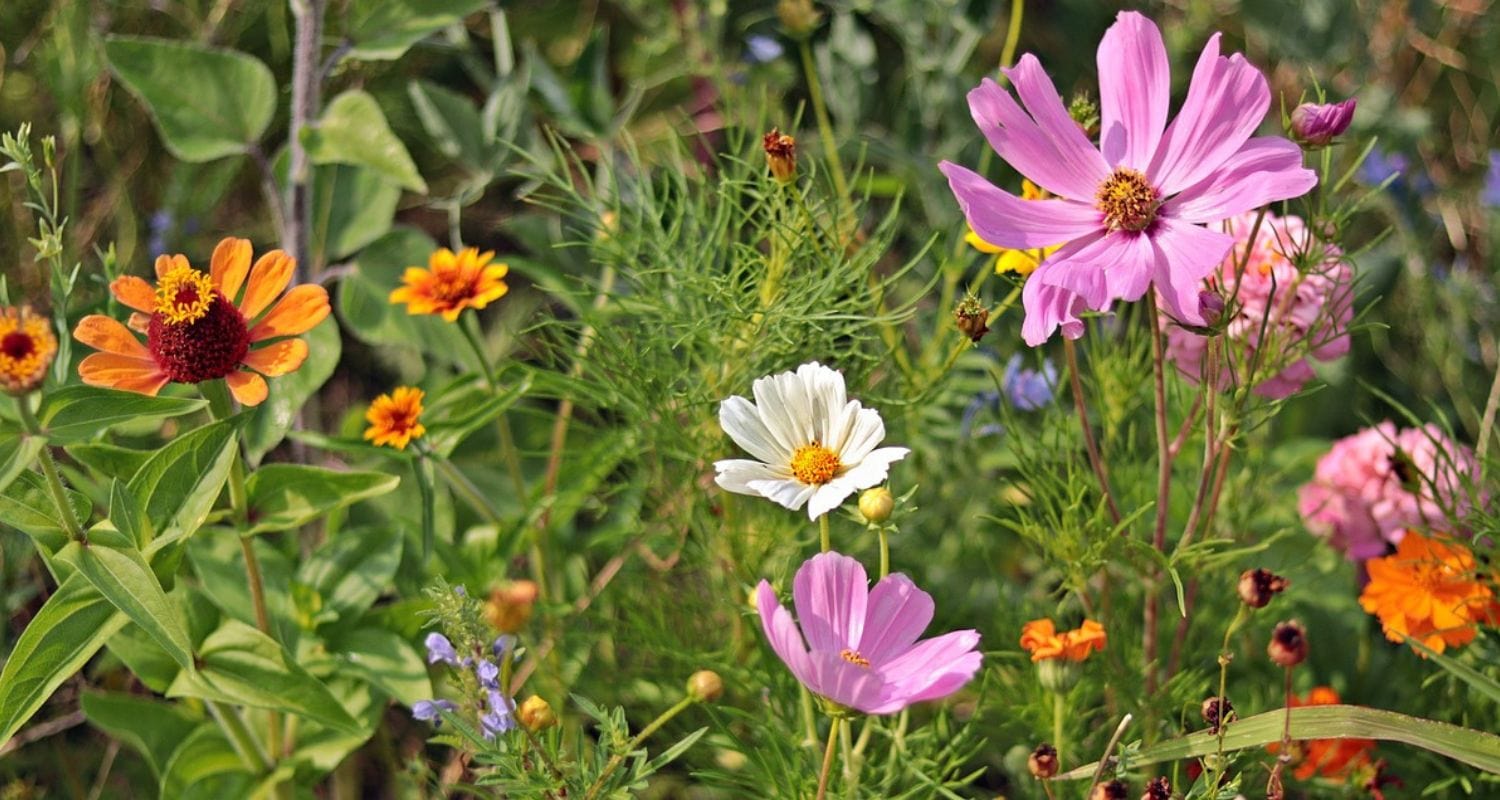
Flowers, herbs and vegetables that plant themselves - what could be better? If you’re pressed for time, want to save money, you’ve got gaps in your borders or just love an informal garden style, self seeding plants could be the answer. But how does self seeding work? Do you need to do anything special (spoilers: no) and are there any downsides to just letting nature do its thing? Read on to find out more.
Jump to:
- What are self seeding plants?
- Benefits of self seeding plants
- How to get plants to self seed
- Self seeding planting schemes
- Self seeding flower and foliage plants
- A note on woodchip
- Edible self seeding plants
- F1 plants and self seeding
- Are there any downsides?
- Other ways to get free plants
What are self seeding plants?
Self seeding plants reproduce by scattering their seed to the four winds without a care where it ends up. Kind of like a recent Prime Minister. The seeds are mostly blown by the wind or fall close to the parent plant, but they can also be spread by birds and animals.
Because this is a bit of a haphazard way of doing things, their seeds have adapted to germinate quickly and grow even in less favourable conditions. This makes them perfect for those of us who don’t have a lot of time to nurture delicate plants. Self seeded plants can pop up anywhere in your garden, in borders, beds, path edges, nooks, crannies and cracks in paving slabs.

Benefits of self seeding plants
If you’re now dreaming of a garden full of wonderful flower-filled randomness for free, you’d be pretty much on the money. Here are some of the reasons why I love self seeding plants.
They fill your garden for less
Buy one plant and get eleven free! I planted an aquilegia in my back garden four years ago and now they’re everywhere - they’ve even travelled as far as the front garden. I’ve only ever had to uproot one of them, which decided to take up residence in the middle of a rose bush (I replanted it in a pot) but the rest are a very welcome sight when they emerge every spring.

You get surprise plants
"Self seeders are like a box of chocolates - you never know what you’re going to get."
- Forrest Gump, first draft (maybe).
Not all self seeded plants grow true to their parent plant. To take the example of those aquilegias again, the original plant was pink, but has produced lilac, blue and deeper pink offspring. Others might come up in the same colour, but a different form or size.
Letting nature take charge of your garden’s colour scheme and placement can open up new design possibilities that you wouldn’t necessarily have thought of yourself. If you’re prepared to be a little open minded, you may be pleasantly surprised.
They bring the garden together
One of the best things about self seeders is that they tend to settle in patches of bare soil, so in no time, they’ll close the gaps between the plants you’ve actually put there and mix it all together in a lovely informal way. Your borders will look less sparse and newly planted, and more established - with no work from you.
They’re good for wildlife
You’ll notice that the flowers on the list below are almost all attractive to pollinators including bees, butterflies, parasitoid wasps and beetles. This is excellent news for your garden’s ecosystem and even better news if you’re also growing fruit or vegetables, as your self seeded plants will bring in the pollinators you need for bumper crops. In return, letting those pollen and nectar rich plants reproduce freely will help to support your local insect populations. But why do they work together so well? It seems there are several reasons.
Firstly, these plants tend to have more flowers as their method of seed dispersal is less precise - so they need to maximise their chances of some getting to germination. Secondly, plants that come back year after year and increase in numbers provide a stable and reliable food source for pollinators.
Ultimately, the reason that pollinators like self seeders is the same reason we like them - they’re less work. If there are lots of the same plant growing closely together, the insects don’t have to fly too far to get their nectar hit, and that’s very important if you’re a bee with limited energy reserves and a lot to do.

Less work, more plant appreciation
If you prefer relaxing in your garden with a good book to snipping away with the pruning shears and mixing plant feeds, self seeders are your friends. They’re some of the lowest maintenance plants you can include in your garden, so you’ll have more time to sit back and admire them.
It’s sounding like a win on all fronts.
How to get your plants to self seed
You know how we’re always telling you to deadhead your plants as soon as the flowers fade? Well don’t do that. Go ahead, let them bolt and form seed heads or pods, because if you cut the flowers off, they won’t develop into seed heads and the plant can’t reproduce.
Unfortunately, this does mean that the original plant won’t produce as many flowers (deadheading convinces them to bloom again, in order to complete their life cycle), so why not have the best of both worlds, by deadheading some of your plants and leaving others to seed?
You can also help your plants along by collecting the seed heads or pods and scattering them around your garden, but really, why bother when you can get the plant to do the work?
Planting schemes for self seeding plants
Self seeders work beautifully in some of the most popular planting schemes. Their relaxed look and natural variation makes them a must have for meadow and prairie gardens, where a seemingly random (or actually random) mixture of heights, colours and shapes brings a sense of space and calm to even the busiest urban garden.
The classic way to use self seeders in your garden is as part of a traditional cottage garden scheme. This beloved English style embraces informality while being a little more structured, with soft pastel colours, plants layered from tallest to shortest and added fruit and vegetable plants. Your self seeding plants put the finishing touch on this garden scheme by bringing it together and making it look less ‘designed’.
Needless to say given their pollinator appeal, they’re also an absolute must for wildlife gardens! Even if your planting space is limited and your time even more so, a few well chosen self seeding perennials can transform a low maintenance or contemporary garden into a tranquil wildlife haven in no time - as well as a much needed chillout space for you.

Self seeding flower and foliage plants
- Allium
- Poppy
- Erigeron
- Aquilegia
- Foxglove
- Verbena bonariensis
- Eryngium
- Borage
- Astrantia
- Forget me not
- Marigold
- Nasturtium
- Achillea
- Echinacea
- Cosmos
- Delphinium
- Euphorbia
- Gladiolus
- Hollyhock
- Hosta
- Lupin
- Primrose
- Sedge

Beware the woodchip
I know, I know, I’m always telling you to mulch around your plants; it’s a great way of stopping weeds from taking root. Unfortunately it’s also a great way to reduce self seeding, so if a self seeded garden is your goal, you might want to go easy on the mulch or use a more permeable material such as compost or manure rather than woodchip or straw.
Edible self seeding plants
A note of caution on this one - we usually advise you not to let herb and vegetable plants bolt as it makes them put their energy into flowering rather than the parts of the plant we actually want to eat. However, if you plant extra, you can use some plants for harvesting and others for seeding. These are some of the most prolific edible self seeders:

When self seeding goes wrong
If your plants are F1 hybrid varieties, they’ll produce excellent crops themselves, but don’t let them self seed - an F1 plant isn’t bred for that purpose, so any offspring it produces will be underwhelming in both taste and performance. The best plants to grow for self seeding are heritage or heirloom varieties, as these are open pollinated.
Is there a downside to self seeding?
The thing that makes self seeders so attractive to some - the informality, the chaos, the unpredictability - is a nightmare to others. You can’t control it. But if these problems crop up (see what I did there?), here's what to do to get your self seeding garden back on track.
One plant has gone crazy and it’s taking over
One or two plants will inevitably self seed more effectively than others, and if they’re your favourites that’s great, but you don’t want to encourage a monoculture. If this starts to happen, you can uproot the plants you don’t want and relocate them or give them away. If you’re aiming for a good mixture of species, you may want to limit these more vigorous ones by deadheading some or all of them.

Thanks, but I didn’t want it there…
Again, as you have no control over where your self seeded plants will pop up, sometimes they’ll choose the most inconvenient place! If this happens, you may have to do a little selective editing. As above, dig them up and replant them somewhere that isn’t directly under your kid’s swing, or give them to friends.
Nothing’s happening
Self seeding isn’t guaranteed - sometimes it takes a little longer to get going, depending on your garden conditions. Self seeders are particularly slow performing in heavy clay soils (they can’t get stuck in) and light, sandy soils (they blow away).
If this is the case with your garden, you can try improving your soil by turning it with a garden fork and mixing in some compost or well rotted manure. Give it some time and if nothing happens, you could collect the seeds and scatter them yourself until the plants take hold.
The new plants are a different colour
If you have a precise colour scheme in mind (or you just have a particular aversion to orange) then the randomness of self seeding might not always work for you. In this case, you can do a little editing by pulling out the colours you don’t like and encouraging those you do.
Self seed or weed?
Possibly the biggest issue with self seeding is that unless you’re really familiar with the plants as seedlings, it’s difficult to tell which young plants are weeds and which are your self seeders. A plant identification book or app is your friend here, as it can usually recognise the plant at several different stages of its life.
Another way to get familiar with your young plants is to take some seeds from each one and plant them in pots (with labels!) then you’ll have a good reference point for any that spring up in your garden.

More ways to get free plants
Many plants reproduce themselves by means other than self seeding - some perennials like agapanthus, heuchera and salvia for example, reproduce by forming clumps and others, like iris and crocosmia, spread by underground stem networks called rhizomes.
Although it involves a little more work than just letting your self seeders, well, self seed, you can still divide and redistribute clumping plants around your garden to get that wonderful natural effect.
Taking cuttings is another great way to make your plants go further. Our free plants article has all you need to know for increasing your plant stock without wiping out your bank account.
Last updated: 27/05/2024


